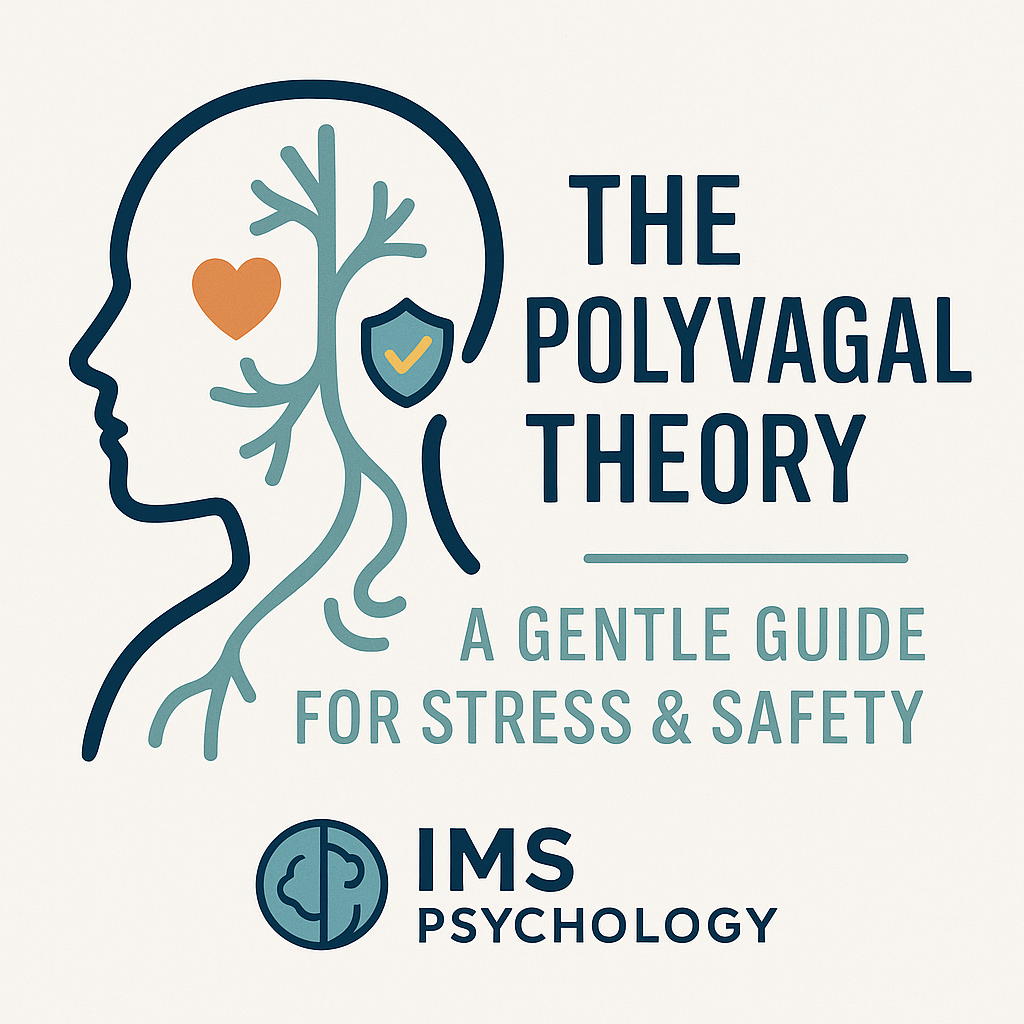
The Polyvagal Theory: A Gentle Guide for Stress & Safety
Share
The Polyvagal Theory: A Gentle Guide for Stress & Safety
Learn how Polyvagal Theory explains stress, safety, and connection. Discover gentle practices to calm your nervous system and support emotional healing.
Introduction: Why Safety Matters More Than We Realize
Stress is not just “in your head” — it lives in your body. When you feel unsafe, your nervous system reacts before your mind even catches up. This is where Polyvagal Theory, developed by Dr. Stephen Porges, offers a compassionate map. It helps explain why we shut down, why anxiety feels overwhelming, and how safety and connection can bring healing.
This gentle guide will walk you through the basics of Polyvagal Theory, why it matters for your well-being, and practical steps to regulate your nervous system.
What Is Polyvagal Theory?
Polyvagal Theory is a scientific framework that explains how our autonomic nervous system — the system that regulates survival responses — influences emotions, behavior, and relationships.
At its core, it highlights three states of the nervous system:
-
Ventral Vagal State (Safety & Connection)
-
Calm, open, socially engaged.
-
Feels like ease, curiosity, and presence.
-
-
Sympathetic State (Fight or Flight)
-
Activated when danger is detected.
-
Feels like anxiety, restlessness, or anger.
-
-
Dorsal Vagal State (Shutdown & Freeze)
-
Activated in overwhelming threat.
-
Feels like numbness, disconnection, or exhaustion.
-
These states shift constantly, depending on whether our body senses safety or threat.
Why Polyvagal Theory Matters
Understanding this theory is empowering because it shows:
-
Stress reactions are not weakness — they are survival strategies.
-
Healing happens when the body feels safe, not just when the mind “thinks” safe thoughts.
-
Connection with others (eye contact, tone of voice, safe touch) can regulate the nervous system.
The Role of Neuroception: Safety Without Thinking
A key concept in Polyvagal Theory is neuroception — the body’s unconscious scanning for safety or danger.
-
When neuroception detects safety → ventral vagal system activates → calm and connected.
-
When neuroception detects threat → sympathetic or dorsal responses take over.
This explains why people can feel unsafe even if “nothing is wrong” logically. The body senses cues (a harsh voice, a sudden movement) and reacts automatically.
How Stress Shapes the Nervous System
Stress and trauma can cause the nervous system to get “stuck” in defensive states:
-
Constant fight-or-flight (hypervigilance, anxiety).
-
Frequent shutdown (numbness, dissociation).
-
Difficulty returning to safety and calm.
Over time, this impacts not only mental health but also physical health, since the autonomic nervous system regulates heart rate, digestion, and immune function.
Practical Tools to Support Nervous System Regulation
Polyvagal Theory is not just abstract science — it offers gentle practices to restore safety:
1. Breathwork
Slow, deep breathing (especially extending the exhale) activates the ventral vagal system, promoting calm.
2. Vagal Toning Exercises
-
Humming or singing
-
Gargling water
-
Gentle chanting
These stimulate the vagus nerve and signal safety.
3. Grounding Through the Senses
Engage your five senses to anchor yourself in the present: notice colors, textures, smells, or sounds around you.
4. Social Connection
-
Safe eye contact
-
Listening to a soothing voice
-
Time with trusted people
Connection is one of the strongest regulators of the nervous system.
5. Gentle Movement
Yoga, walking, or stretching help release stored activation and bring balance back to the body.
A Trauma-Informed Perspective
For individuals with trauma histories, nervous system states can feel unpredictable and overwhelming. Polyvagal Theory validates these experiences, reminding us:
-
Reactions are survival responses, not flaws.
-
Healing requires safe environments and gradual practices.
-
Self-compassion is key — the body is doing its best to protect you.
When to Seek Support
If you often feel stuck in anxiety, shutdown, or stress responses, working with a trauma-informed therapist can help. Therapies such as Somatic Experiencing, EMDR, or Polyvagal-informed approaches integrate nervous system science with healing practices.
Practical Tools for Everyday Calm
IMS Psychology offers downloadable, science-based workbooks that support emotional regulation and nervous system awareness. For example, our [Guide to Self-Soothing Workbook] provides structured exercises to help you ground, calm, and return to safety.
Conclusion: From Survival to Safety
Polyvagal Theory shows us that the path to healing is not about “thinking harder” — it’s about helping the body feel safe again. By learning to recognize your nervous system states and applying gentle regulation tools, you can shift from survival mode to connection, presence, and resilience.
If you’d like to explore these practices further, visit the IMS Psychology shop for guided workbooks designed to turn insight into action.
written by,
Martin Rekowski (29.09.2025)